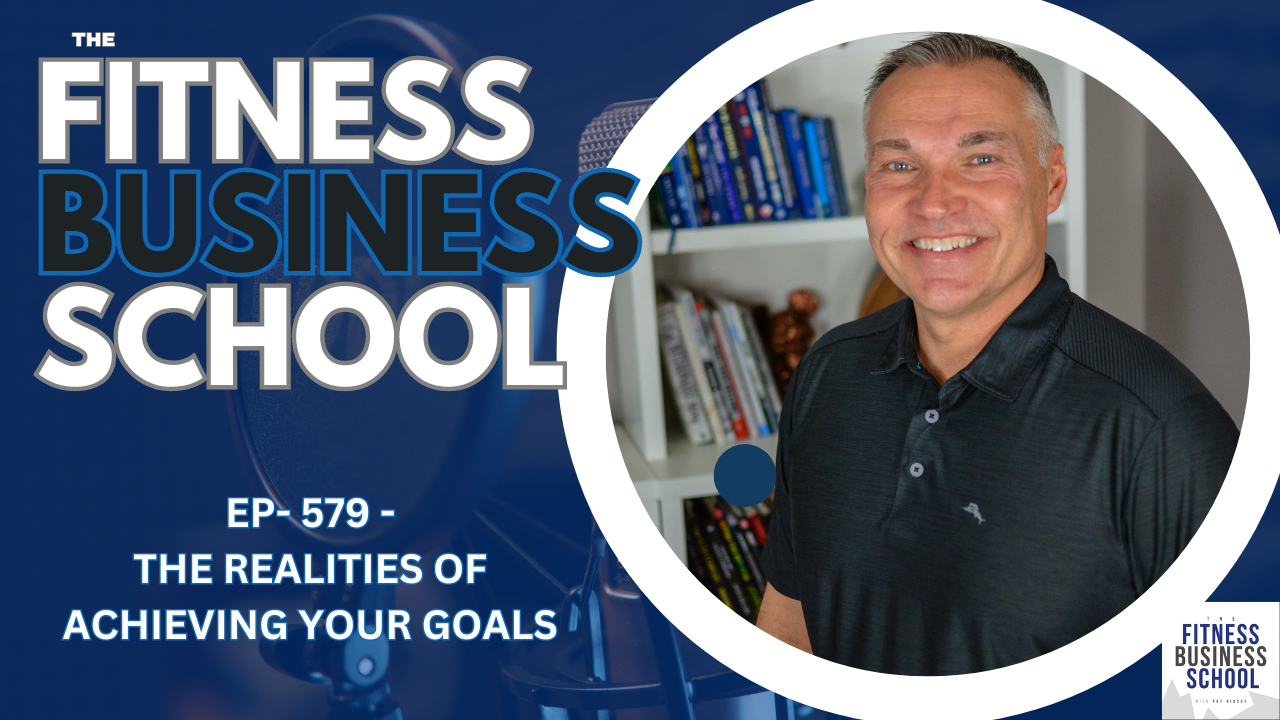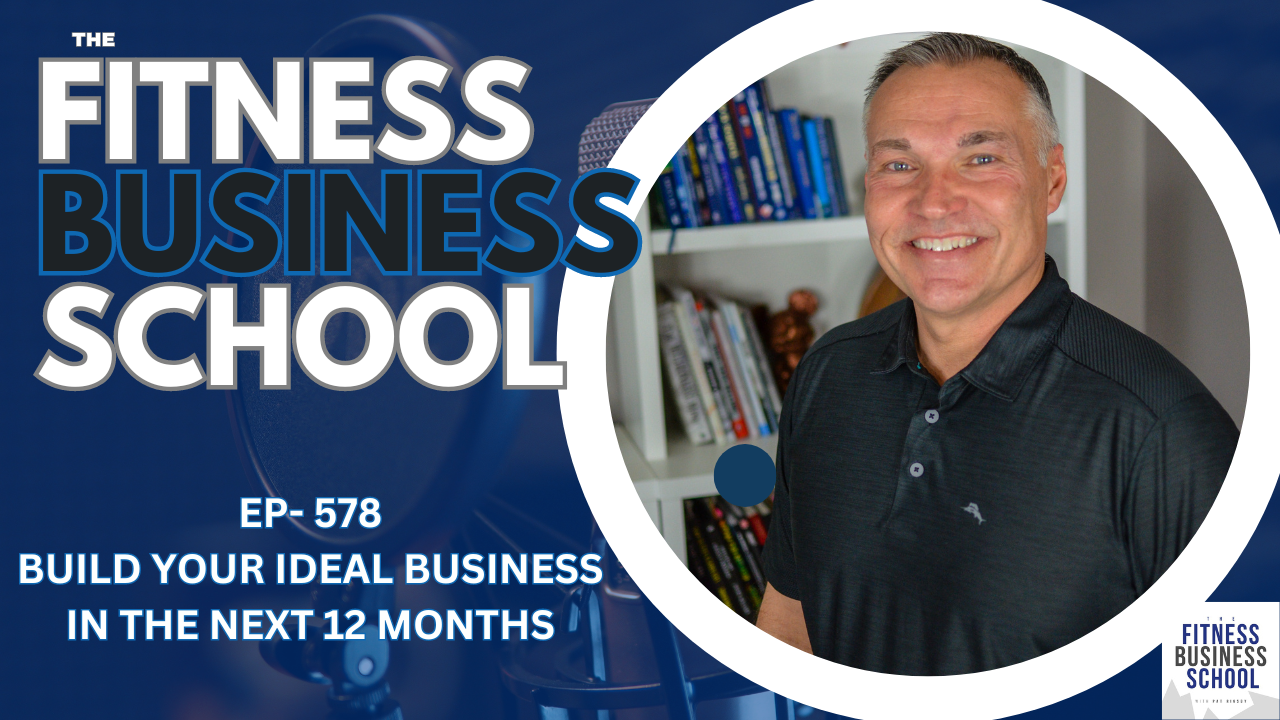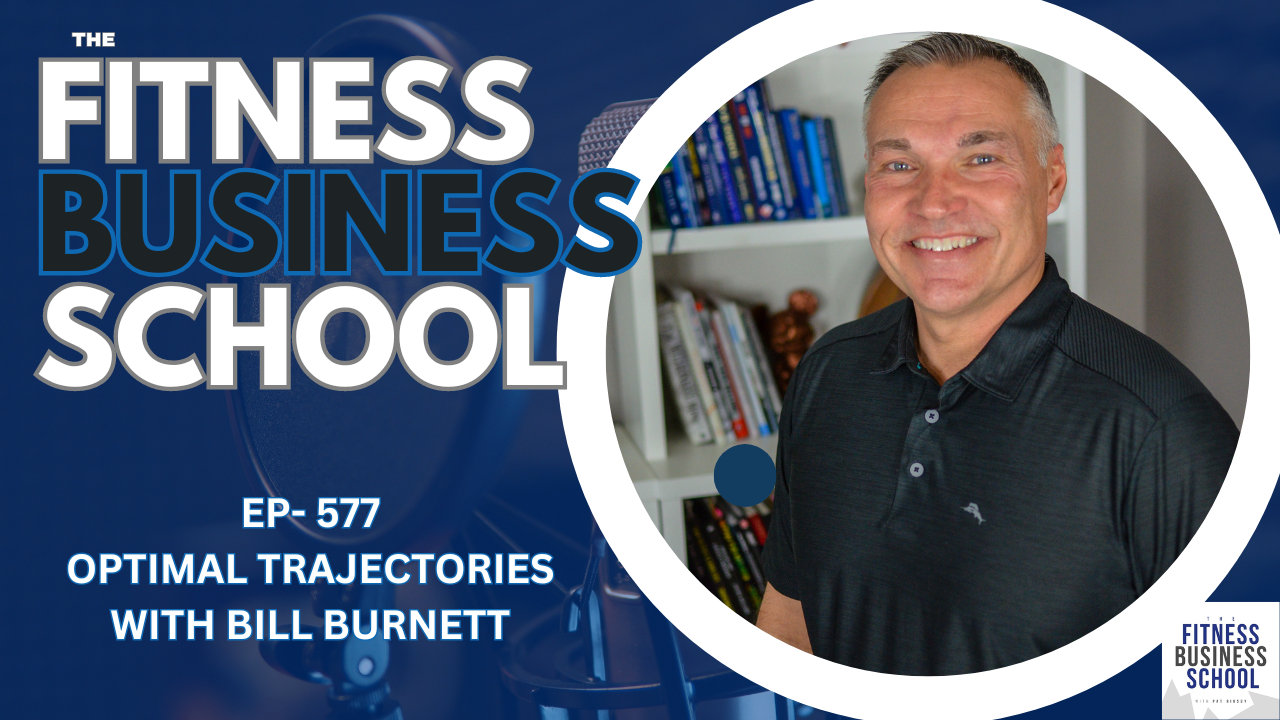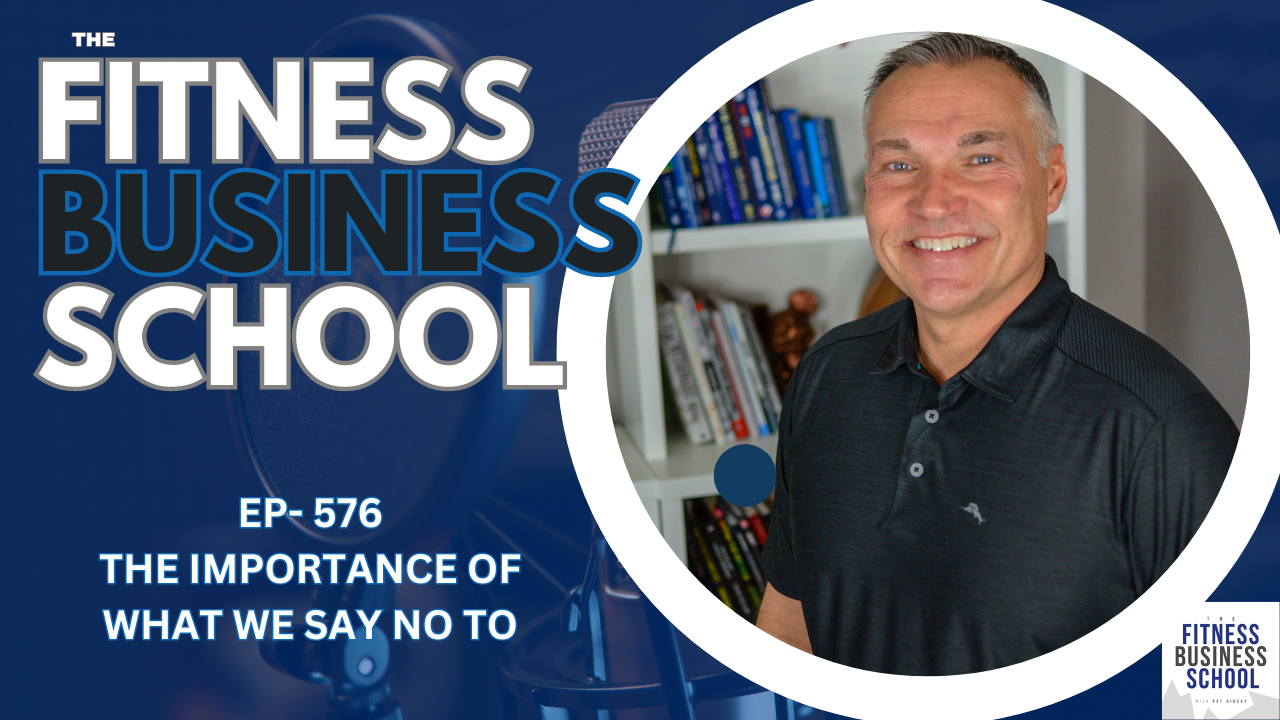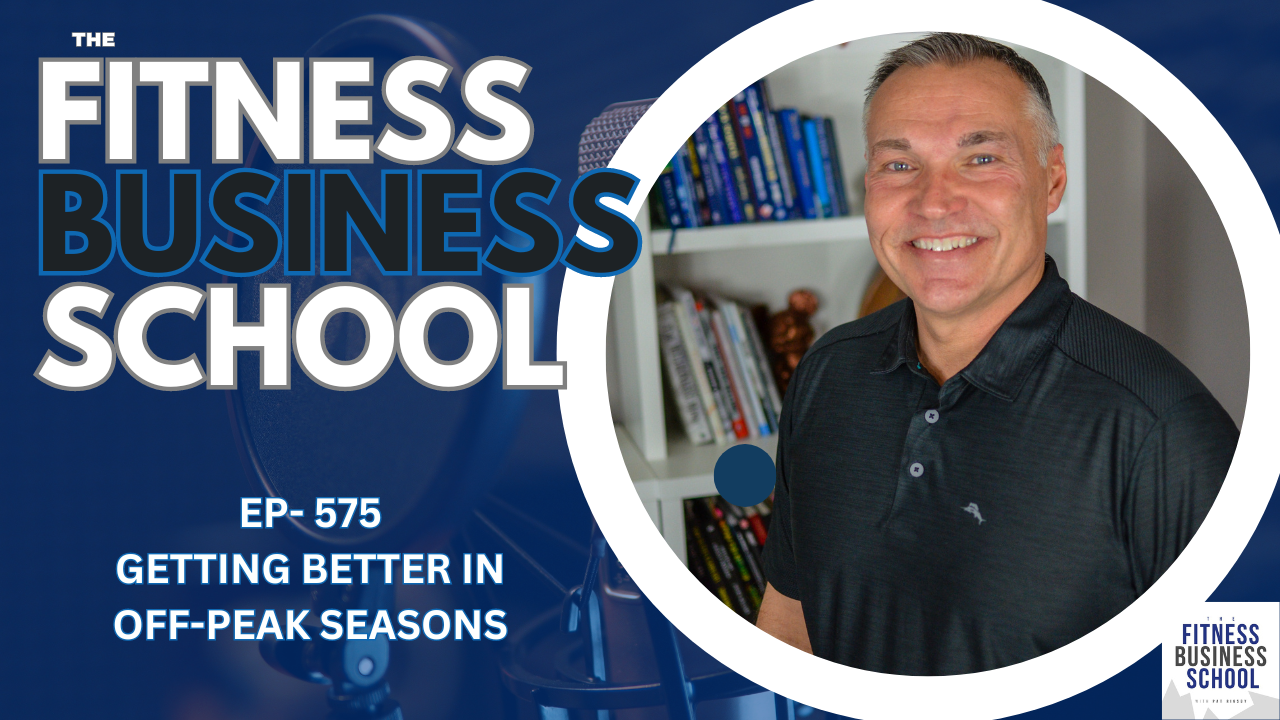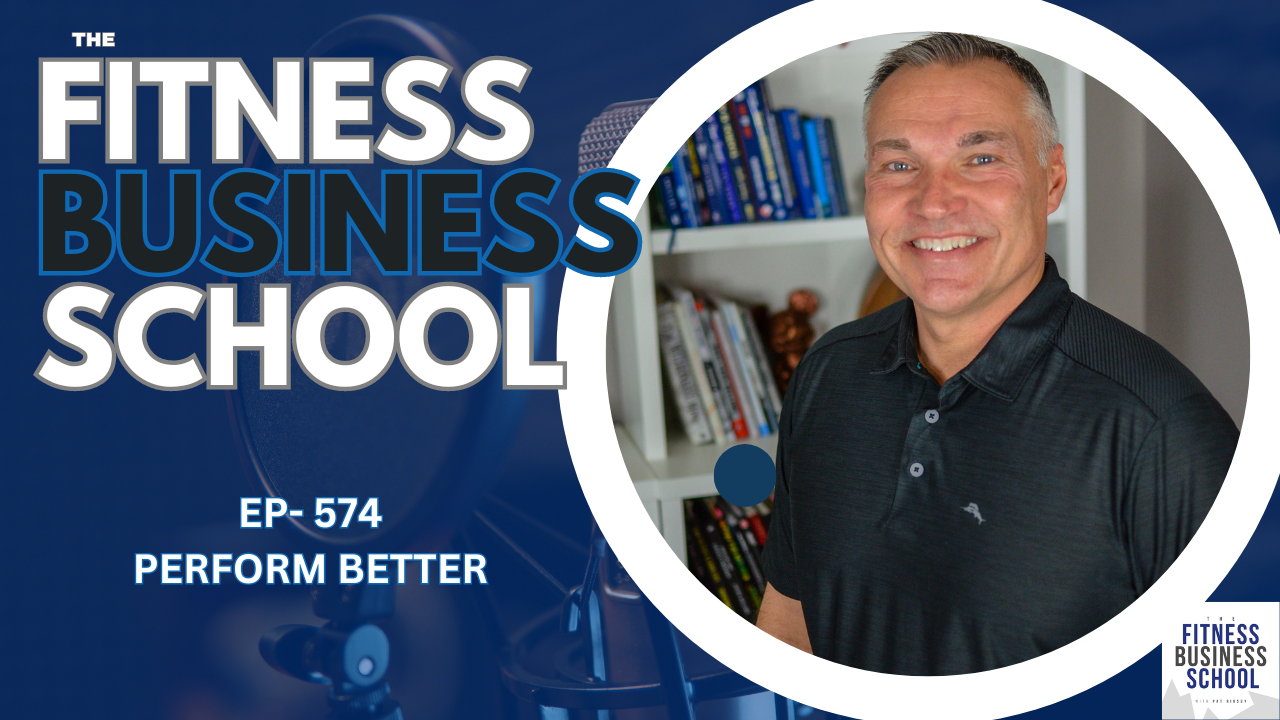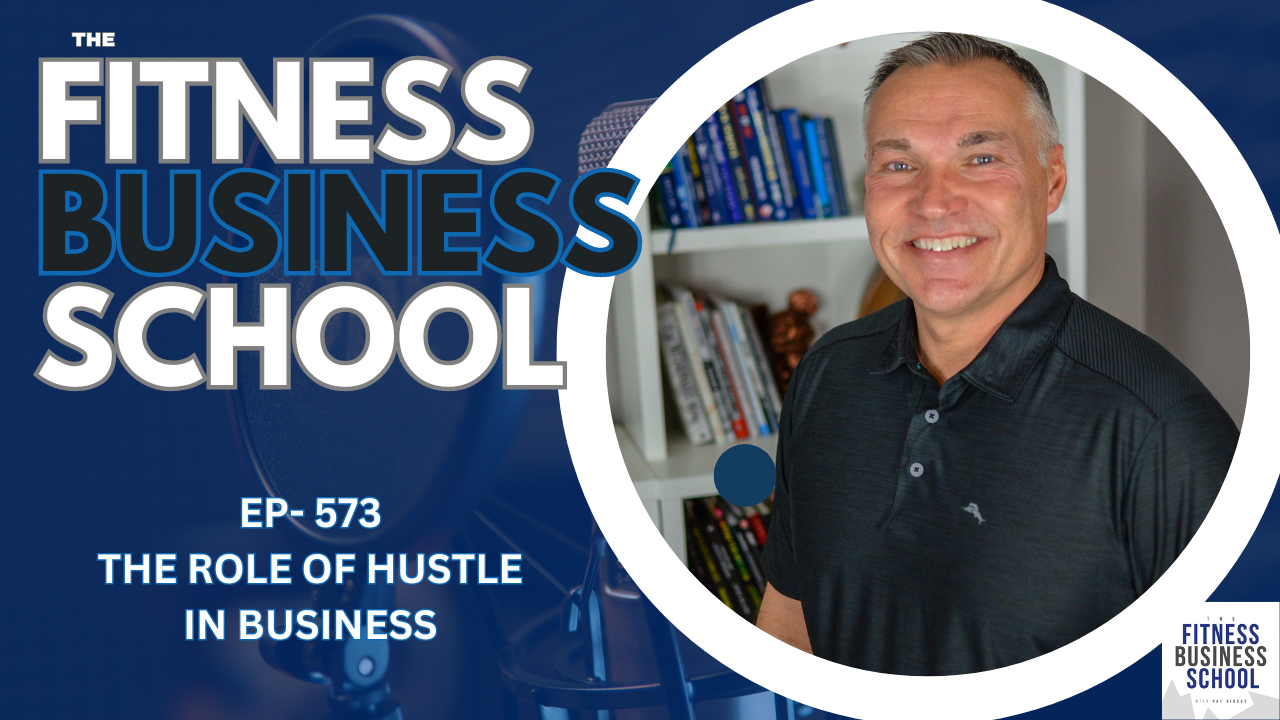Show Notes
00:00 Introduction to Change
00:28 My Journey to Business Coaching
01:07 Challenges as a Young College Baseball Coach
04:35 Taking Control and Fundraising Efforts
06:34 Facing Setbacks and Finding New Paths
08:33 Embracing Change for Growth
10:18 Conclusion and Special Offer
Full Transcript
Hey Pat Rigsby here, and I want to talk about how change isn’t always a bad thing. Let’s get to it.
Welcome to the Fitness Business School podcast, the show for fitness business owners who
want to grow their income, increase their impact and improve their lifestyle. Be sure to listen to the end
of this episode because we have a brand new special offer exclusive for listeners. So stay tuned.
Since you’re listening to this podcast, you’re probably aware of the fact that today I coach health fitness, sports performance, business owners, and the occasional non sport fitness health industry business owner to build their ideal business. But it wasn’t always that way. In fact, I had zero intention of being a business owner, even though I grew up where my dad owned a small auto repair business.
And as I recorded, it still owns a small auto repair business. In fact, I think that seeing his experience as a business owner didn’t draw me to business. It probably steered me away from it. No, really, I wanted to be a hall of fame college baseball coach. That was what I wanted to do. But the truth is I wasn’t what I would call a model employee.
And I was hired at the ripe old age of 20 to be a head, to be the head baseball coach at my alma mater. And I was the youngest college coach in the country. And the way that a 23 year old gets that job is it’s a bad job. It’s just a job that. It is certainly not one that people want. The school was making some changes.
That they were thinking strategically would add more students by adding other sports, but in turn eliminating scholarships for baseball and the other sports that existed. So it was a rough job and that’s how I got it. We had the lowest budget in the conference by a pretty large margin. Our uniforms were old and ragged.
I’m sure I couldn’t even show them to the baseball players that I coach now. The 13 year old baseball players that like the best of everything. Our home field was a city owned park that I was, that has great nostalgia. It was a a neat place that branch Ricky, the, the owner who brought Jackie Robinson into Major League Baseball Commission to have built for a minor league team since Branch Rickey’s from my hometown But it was in disrepair and it was and like I said the city owned it So I didn’t really have a whole lot of control over it.
Heck our budget was almost exactly what my budget is for a 13 year old summer team right now and I made Next to nothing my first Salary as a college baseball coach was less than 5,000. And then, so I had to cobble together a number of other roles at the university to make what past is a serviceable full time income for a 23 year old.
After the, at least for the first couple of years, I was pretty much a model employee. I was very much conservative in my approach and my choices and the way that we approach things. We were recruited because I was young and I wanted to just lay the foundation for a long, hopefully successful career.
And we had moderate success. We won more than we lost, which was a first for that program. But I wanted more, right? I wanted to play at a higher level. I wanted to compete for championships. And I knew that doing things the way I had done them and playing within the constraints that were presented to me.
Would take doing things differently, doing things more. And I’ve talked about recruiting and our player development approach at length in different podcasts. And I won’t bore you with more of those stories, but I went to my athletic director and kind of pleaded my case and said, man, we need more money.
We need. Do you have money to fund spring trips? We need to have money to be able to provide a better set of resources for our players. And so my athletic director, who is a terribly nice guy said, look, man, I did try to help, but the odds are the budget wasn’t going to improve. I took matters into my own hands.
I started fundraising. We sold everything from sponsorships to cheesecakes. I got a local entrepreneur to help me put together a casino night on a river boat before there were river boats like an hour away from where we lived at the time, the casinos that way. And then found like the, a local fire department was actually the organization put it on and I just.
essentially was like the project manager and they donated like 90 percent of the proceeds to us. We sold lottery calendars and did the same type of thing. And needless to say, my kind of going rogue approach didn’t exactly keep a couple of people in our administration very happy. But the team was improving the money we raised, we played more games and we won most of them.
We advanced all the way to the college world series and finished fifth and I get home and I’m thinking, man, hopefully this kind of success would earn us more support from the school. But actually the opposite occurred. The vice president who I think enjoyed me the least by a large margin told me our budget was going to be cut, told me word for word that we didn’t need to be that good.
We did not need to be a world series caliber team. And we just finished the world series competing. Where there were 10 participants, the other nine had the full allotment of. 12 scholarships. We had 1.7 and now our budget was going to be even less. In fact, it was going to be less than the other, what they considered mid tier sports at the university.
So the sports that weren’t men’s and women’s basketball, we didn’t have football like volleyball that carried a much smaller roster and soccer that carried a much smaller roster. We carried 40 plus players and we were going to have less budget. And it was on that day that I knew I needed to have more control over my own destiny.
I knew I wanted to be in an environment that the rewards were directly tied to my performance. Now, it took a while for me. I don’t know that I was particularly courageous. And just saying, okay, I’m, this is it. I’m going to go do something different. And, but it definitely led me to not continue pursuing a small college coaching career moved to somewhere I had more control after one more year at the university. And it was a day that made me furious at the time, but it really pushed me out of my comfort zone and differently. And in the moment I wouldn’t have considered it that way. I was just mad and I was disappointed and I felt like all my hard work was for not, and I was confused and not sure what my next steps were, because even with the success we’d had, I didn’t exactly have a lot of people knocking down my door, offering me great jobs.
There were some okay jobs, but not enough to really move on from what I built in my mind at the time. That’s the thing is when. The challenges arise and difficulty comes when you’re in the middle of that storm. You’re not sitting there thinking, Hey, this is the springboard for the better things that are to come.
But historically, that’s how things have largely worked in my professional, right? Every like professional life, that’s how it works, right? Every success almost without exception is preceded by some struggle. No one ever lives their best life, builds the business or dreams without. Leaving their comfort zone.
So when you’re faced with challenge or frustration, just remember, it might be the catalyst for something better. I know it has been for me and every professional challenge I’ve faced has led to something better because it forced me to do something differently. We can’t be better by just staying the same and doing what we’ve always done.
Now that doesn’t mean. Given those same circumstances, I still wouldn’t be frustrated or whatever else, because each time that I’ve faced some sort of turbulence in my business, I would be frustrated. Then it’s not like I just go into some Zen mode and say, Oh, I’m good. I know this means better is to come, but what it has taught me is to take a step back and get clarity about.
Where I want to go, like what I want my future to be, what I want to do, what I want to avoid, and I just use that when it pushes me out of that kind of comfortable lane, my default setting is to just use that as a reset and say, okay, where do I want to be? Is this just because I was here doesn’t mean I have to stay here.
And that reset usually allows me to get focused again and pursue The next right thing for me and not be so caught up in whatever’s happened to that point. So hopefully that helps. I just want to encourage you if things aren’t going exactly the way you want right now, I’m not going to tell you everything’s okay about it, but I’m saying that it certainly can be the precursor for things to be way better than okay.
So use change as your ally. And I have a feeling, Things will work out better than you might expect. I know they have for me.
Thanks for listening to this episode of The Fitness Business School.
Before you go, I have a quick announcement:
One of of the things that we’ve been doing with our current clients is taking them through this Ideal Business diagnostic and really what it is, this checklist that allows you to pinpoint exactly what your business needs next so you can keep improving, keep growing, and build a business that you love to own, one that pays you well, one that allows you to have the impact you wanna have and one that allows you to have a lifestyle that you truly enjoy.
In this diagnostic, we walk through everything and we do an evaluation and can instantly pinpoint what you need to do next to build that business that you want. I’m going to extend this opportunity to get on with either me or my team and take you through this evaluation and fix your business’s most vital needs fast.
So if we take you through this, you’re gonna be able to make those vital changes that you need to finally have what I call your Ideal Business. If you’d be interested in going through this entirely free, risk-free diagnostic with us and learn what you already have in place, what you’re doing well and where are your greatest opportunities for rapid improvement are just shoot me an email with diagnostic in the subject line to [email protected].
Again, an email to [email protected] with diagnostic in the subject line will get
you scheduled and take you through this evaluation to help you build the business you want.

